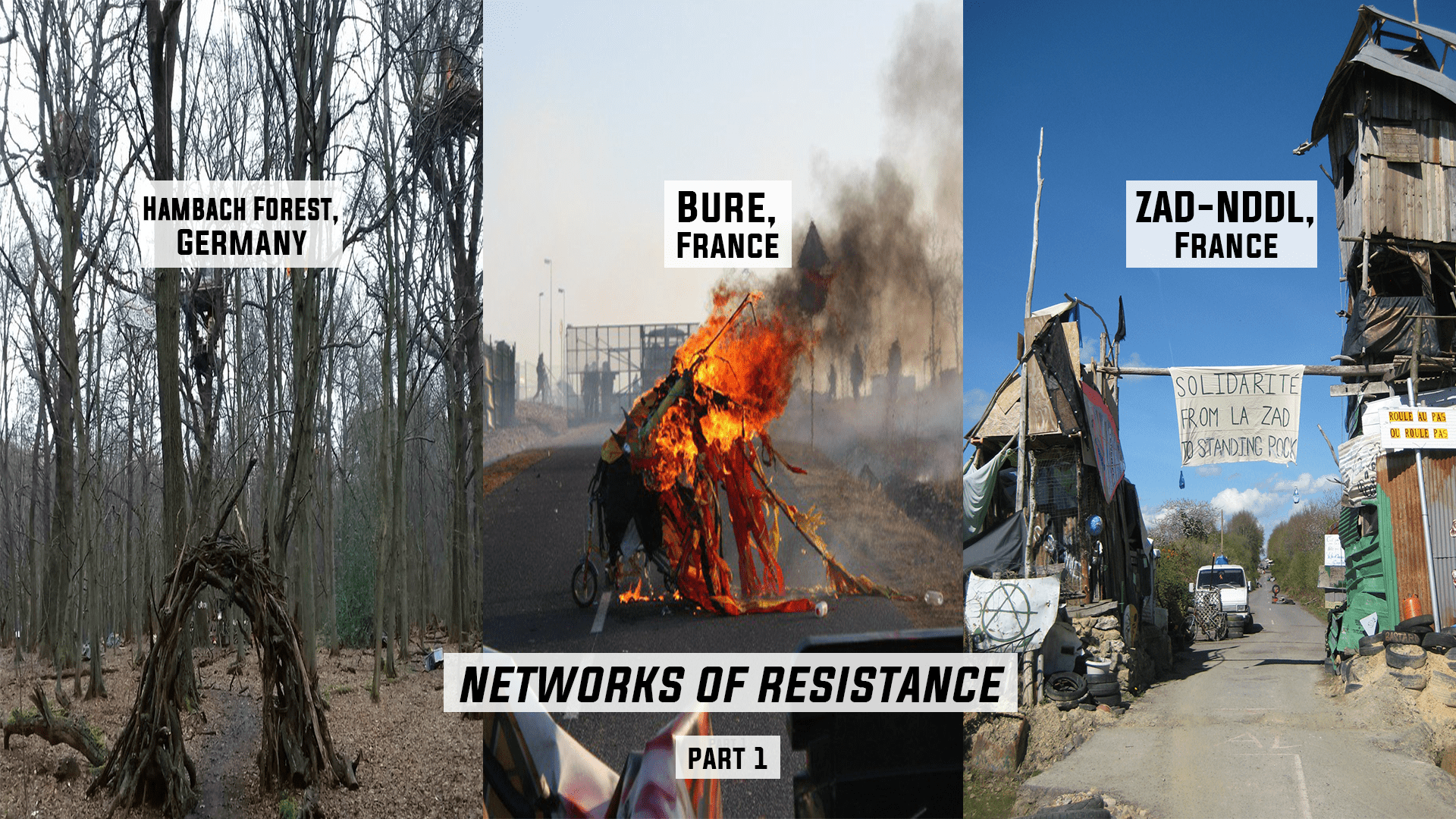Greece: Networks of Resistance Pt. 1 – ZAD, Bure, Hambach Forest
Athens, Greece – In the summer of 2017, folks in Athens organized the Networks of Resistance: 1st European Local Struggles Conference to “create an open source platform” to expand upon and share the experiences, knowledge, and ideas that have arisen from organically created resistance encampments currently building new alternatives outside of capitalism and nation-states. The two-day conference was held in the self-organized Embros Theater, which is a squatted ex-factory in the Psiri District of Athens.
Navigating through the dynamics of building strong grassroots movements that impact radical change is a arduous task. The resistance to the Dakota Access Pipeline (DAPL) in the United States was monumental, but it didn’t stop the project nor the flow of oil. In Europe, resistance to development and fossil fuel extraction projects continues to grow in waves, similar to the USA, and like the resistance camps around Standing Rock, autonomous experiments of building an alternative society outside of capitalism and void of consumerism and hierarchy have existed for years now.
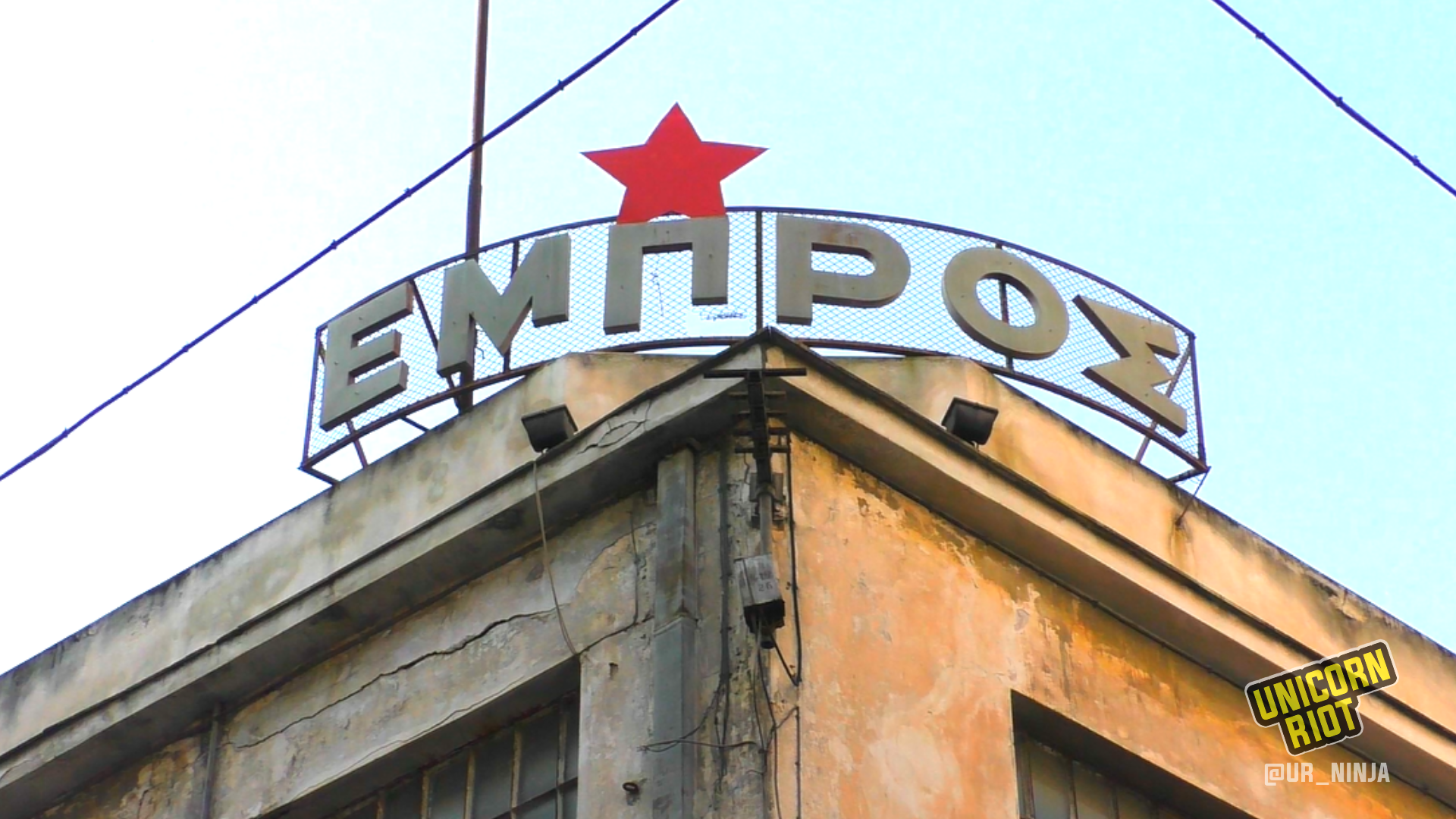
During the first day of the conference, activists from the frontlines of three European struggles, Hambach Forest, Bure, and the ZAD, converged in the smoky theater to share their experiences, ideas, and network among the dozens of audience members. Activists from the Hambach Forest in Germany came with their experience of an ongoing forest occupation to resist its destruction for opencast lignite coal mining. Activists from Bure, France shared their struggle against the construction of an underground nuclear waste repository (CIGEO); from Notre-Dame-des-Landes, France, activists out of the autonomous zone of ZAD shared their fight against the construction of an airport. The participants of these movements are not only actively engaged in a struggle against specific projects, but are also building alternative, autonomous ways of living outside of capitalism.
AUTONOMOUS ZONE OF THE ZAD NDDL, FRANCE
In one of the most historic examples of land defense, anti-capitalists, anarchists, anti-authoritarians, environmentalists, farmers, squatters, and more, have created the ZAD Notre-Dam-des-Landes (NDDL), an autonomous zone that has stood as a free space since 2009. It has built a network of occupied solidarity zones defending the land throughout France that are all ‘zones to be defended’ or Zone À Défendre (ZAD). ZAD is originally an abbreviation from “zone to be later,” that comes from the state’s tactic of buying land to be used in development later. “Zone to be later” got re-worded to “Zone to Defend.”
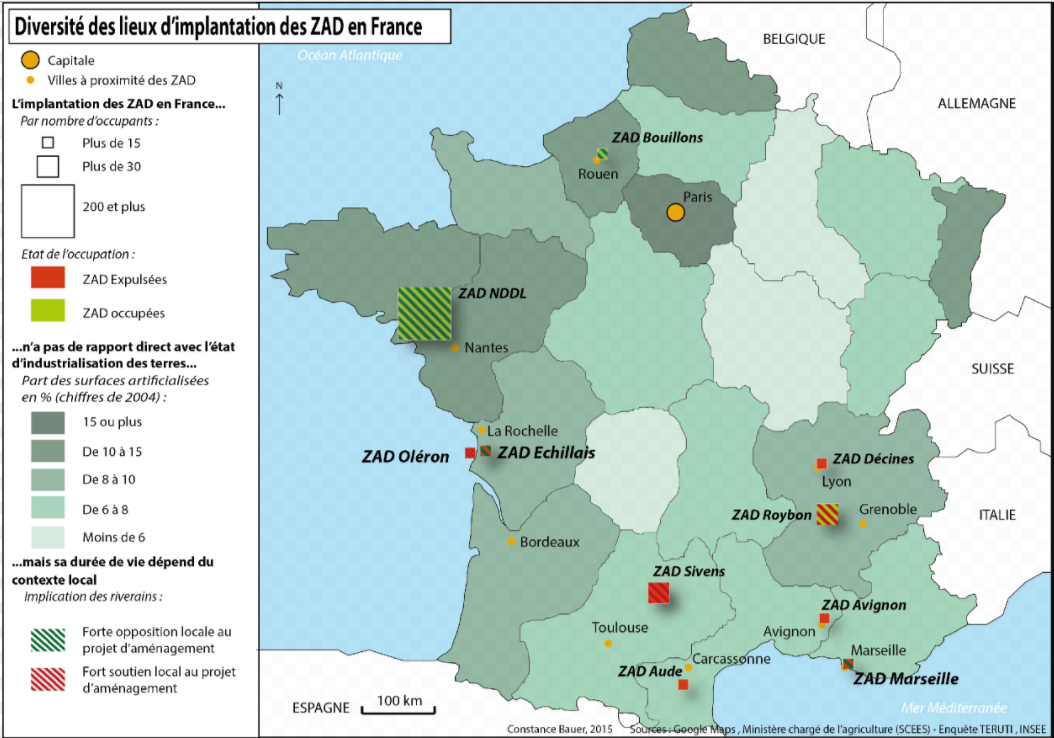
In Embros Theater, the presenter from ZAD spoke about the government’s attempt to build an airport and create new economic developments beyond Paris and in the Western regions of France. From the 1970s and on, the country of France continually bought land in the NDDL region in preparations for development.
In 2008, the French government gave the approval to facility developer VINCI to build the $789 million Grand Quest Airport with a then-planned completion date of 2017. Due to the massively successful occupation of the land to defend it from construction (ZAD), the airport in NDDL France, a country that has the most airports per inhabitants in the world, has yet to be built.
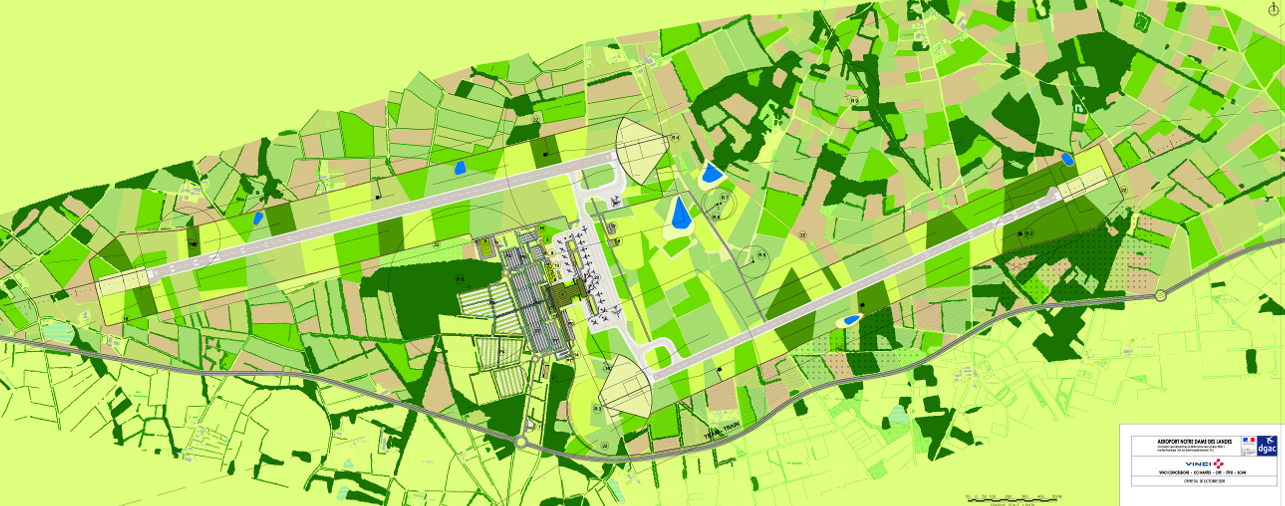
For four decades now, farmers and inhabitants of the land of NDDL have been struggling against the project. Nowadays, the residents of the area along with anarchists, anti-capitalists, environmentalists, biologists, and a large assortment of concerned citizens and community members have built a new existence while gathering behind one mission, to stop the airport. Preventing the construction of the airport stops the projected new developments from gaining capital and helps preserve the Earth’s environment, preventing wildlife and pristine woodlands from being cut down.
Since 2008, the occupation at ZAD NDDL grew out of festivals, mobilizations, and the broader airport resistance movement. Infrastructure was created by the horizontally-organized assemblies that were making decisions together as to how to set up their “free” society while resisting the construction, as well as resisting the authorities’ constant threats of repression and eviction.
“Our goals, in coming to live here on the proposed site of the airport, are many: to live on a protest site, where we can be close to those who’ve been opposing the project for 40 years and to have the power to act when construction happens; to make use of abandoned spaces to learn to live together, to cultivate the land and to be more autonomous from the capitalist system.” – ZAD website
After a couple years of occupation and movement building around the issue, the French authorities made plans, called Operation Caesar, to utilize over 1,000 paramilitary police forces and military to clear out the ZAD occupation in late 2012.
Intense resistance to this eviction attempt sparked riots for over a month with erected barricades and continued clashes with the police. A large showing of solidarity with over 200 committees of support prevented the eviction. The presenter said that “it was a real diversity of tactics that stopped the eviction“, as the ZADists had been organizing the resistance to any possible eviction for over a year before the police operation.
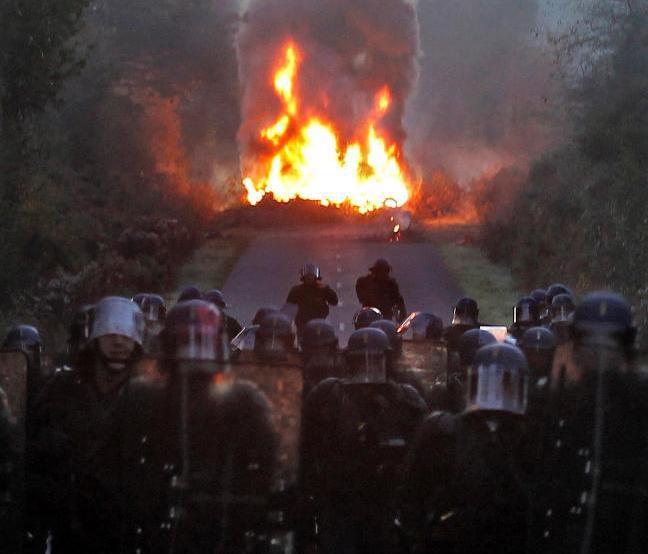
After the failed eviction attempt, the struggle at ZAD, which, in the winter of 2012-13, had brought over 40,000 people to Notre-Dam-des-Landes, grew itself into a self-organized village equipped with a kitchen, dormitories, and over 2,000 hectares of land to cultivate. Farmers standing in solidarity with the squatters and resisters that formed ZAD, came in droves, bringing with them the knowledge of cultivation.
“The farmers are becoming squatters … and the squatters are becoming farmers.” – Presenter on ZAD NDDL
“The moment of eviction [made] everybody in unity. When the cops came with their big machines to destroy everything, something happened” that showed that “we have to be united to be efficient” in the struggle. To create this unity, it was the organizing work of those within the assemblies, from all walks of life, “to see the struggle and to compromise” on, and accept, a diversity of tactics.
The presenter said that although squatting is not normal in France, “what we see today is the movement of the occupation [ZAD] is very legitimate … why is it so popular and very well accepted by newspapers and people around, is because there is a lot of people who are active in a different manner.” People have tried the “democratic” and the legal way “and they saw it doesn’t work,” so that has emboldened the solidarity around the resistance, said the presenter. Masses of the French population have taken part in numerous different actions against the airport in the last nine years. See a documentary of the resistance at ZAD NDDL below.
The speaker said that they use the large area of occupied space to discuss how to create their self-organized occupation. Among the over 200 assemblies working on different facets of the occupation, is one specifically focused on the cultivation of the ZAD and how its occupied communal life can be sustainable apart from capitalism. These assemblies work as working groups that regularly meet face-to-face to discuss and decide things in a horizontal manner.
When asked about how the community deals with internal problems, the presenter said that an assembly of around 400 to 500 people meet every Monday to find solutions to local issues. This assembly has a randomly picked and cycled group of twelve, which operates as a mediation spokes group that helps provide solutions to issues if occupiers have a problem with their neighbor that they can’t solve. In terms of domestic violence, the perpetrator is kicked out of the encampment.
People live in many different ways in the ZAD. There are at least “eighty places squatted, very different. There is farms, there is lands, there is a forest … caravans, houses and some are living in collectives.”
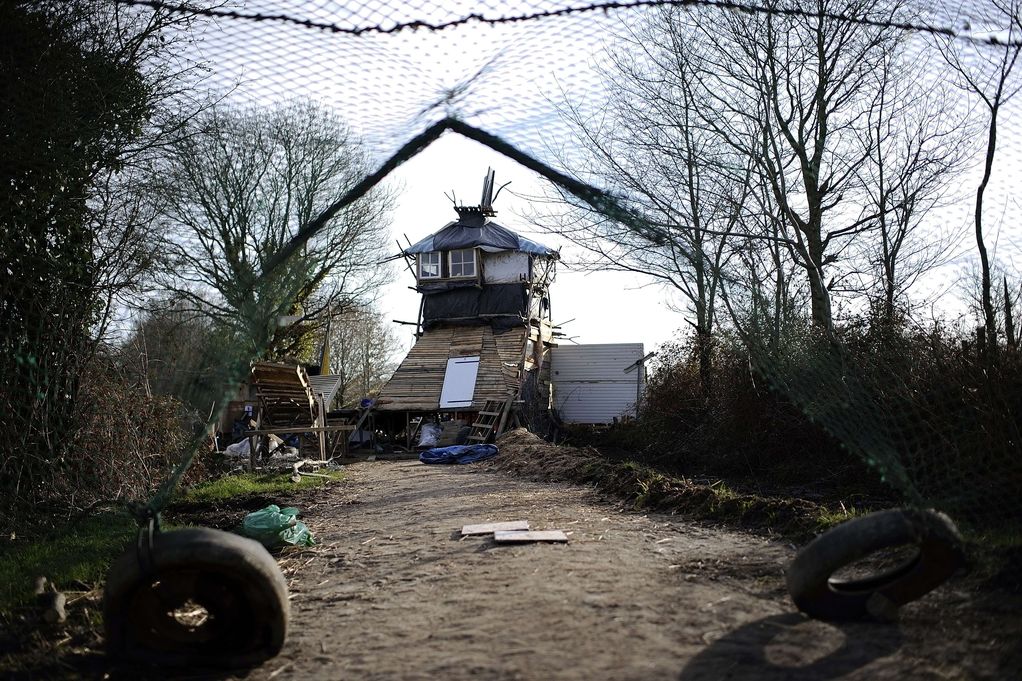
In terms of agriculture and food, which is shared collectively throughout the ZAD, they cultivate vegetables, fruits, potatoes, and more. There is over 120 hectares of land with a mill and two bakeries to make breads. There are sheep and goats and a place to make cheese.
“All of this food are shared in a market, but we call it ‘No Market’, because the food is not merchandised.” – ZAD NDDL presenter speaks about collective sharing of food
Having the occupation provides “a direct base to organize ourselves against the airport, but also against other struggles,” said the presenter, who then spoke about last year’s production of over 20 tons of potatoes and the ability of their agricultural production yields in feeding other ZAD encampments around France.
Along with the infrastructure built in the ZAD are places for assemblies, a cinema, medical facility, a climbing wall, a boxing gym, a house for children, mechanical garages, and more. There is a newspaper called ZAD News, and a pirated radio station taken from radio frequency owned by VINCI (the planned developers of the airport) called Radio Horn, focusing on a variety of resistances, which according to ZAD’s website, “is a pirate radio made by pirates who have never made a radio.”

The presenter said most of the assemblies have weekly meetings on topics that include “self-defense,” because “it’s not very often, but it happens that fascists came to burn things or something, so there is assemblies organizing for self-defense.” Furthermore, they have medics, a legal team, a security team, and direct action defense teams to provided safety in the case of police incursion.
“The ZAD, now the police do not enter in. So, when police are looking for someone, people can come to ZAD to hide.” – Presenter speaks about the liberated zone of ZAD NDDL
Many hundreds of people live in the autonomous zone at ZAD Notre-Dam-des-Landes and have many different skills. They say they are living an existence “against the airport and its world” and are an example of building that “DNA for social change.”
In the midst of the 2015 terror attacks in France and the new labor law and NuitDebout movement, the speaker said that in “June of last year, they tried to evict us and they couldn’t.” The speaker then spoke about how the government “made a new law and they made what they call a consultation,” in which the public voted that they were okay with the new airport to be built. In June of 2017, France’s Prime Minister Edouard Philippe “launched a “mediation” programme on the construction” of the airport and a report will be delivered to the government on December 1, 2017.
The occupants of the ZAD are building an ‘intergalactic cabin’ during a week of workshops and activities at ZAD from August 17 to August 24.
To watch the presentation on the ZAD NDDL at the Embros Theater, watch below:
ANTI-NUCLEAR MOVEMENT: BURE, FRANCE
For decades, the rural communities around Bure, in northeastern France, have been struggling against the nuclear waste industry as it seeks to dispose of its radioactive waste throughout France. Nuclear power is France’s primary source of electricity. As of 2013, France produces over 138,200 cubic meters of radioactive waste a year, in which it stores the high level waste (HWL) and intermediate-level long-lived waste (ILW-LL) at facilities in La Hague, Marcoule, and Cadarache, France.
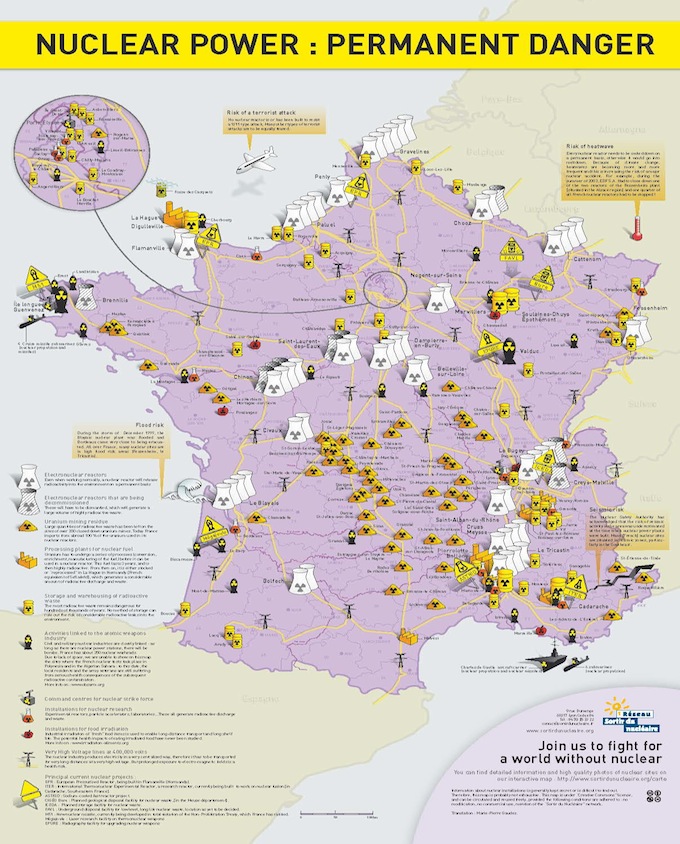
For the last couple of years, land defenders have been living three hours away from Paris, in Lejuc Forest near Bure, in attempts to prevent the planned operation of project CIGEO, a deep underground radioactive nuclear waste repository. In the past, France had shipped their nuclear waste to Siberia or dumped it in the waters off the coast of Somalia.
CIGEO (PDF), France’s long-term solution of nuclear waste disposal, is “to isolate waste while it is hazardous so that its radioactivity in contact with humans and the environment does not represent a health hazard.” CIGEO is a plan to store “80,000 cubic meters of deadly radioactive waste” deep into an underground research laboratory in Bure, France.
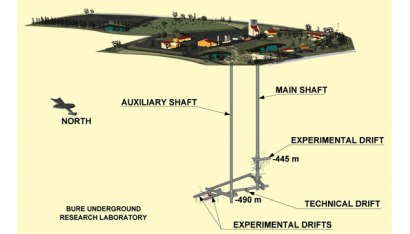
ANDRA, the French National Radioactive Waste Management Agency, manages the mass amounts of nuclear waste that France produces and already has a testing site in Bure, among many other nuclear facilities. The CIGEO project has garnered a lot of opposition, as land defenders, anti-nuclear activists, farmers, and a broad range of community members have actively engaged in a struggle against the facility.
“There is two main things we denounce and fight against. First, the dangerousness of the project in itself and then the colonization of the territory and its consequences.” – Presenter from Bure
Two presenters from the struggle against the nuclear waste landfill project CIGEO, in Bure, France, spoke to the audience in Embros Theater about how the nuclear waste industry, still, after 80 years, doesn’t have an answer as to where to store their waste. The presenters said the first solution would be to stop creating more nuclear waste, and to stop moving the waste all around the country contaminating everywhere.
The presenters spoke about land defenders utilizing the land outside of the city to collectively make food, organize in open spaces, and create free zones to build their autonomy. The occupants of the land defense live together and organize non-hierarchically, with decisions being made in horizontal assemblies.
Activists have bought houses to stay close to the frontlines of the struggle and they’ve created a sustainable existence living in the forest, in treehouses, communal houses, at an old train station, and at the ‘House of Resistance’. The land defenders have created barricades and guard houses for their occupied sections of the forest.
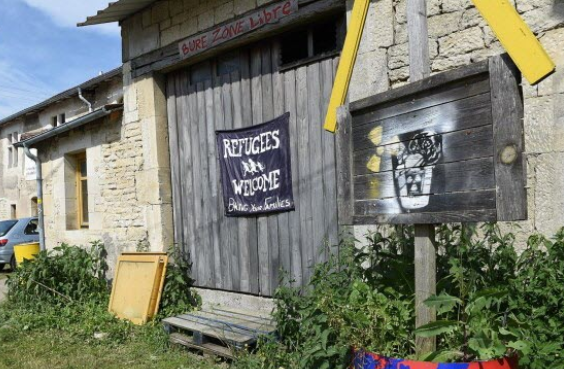
They are organizing relationships with the rural citizens living in the area and said that they are fighting on three levels that are important to continue to keep going at the same time, “the legal level, on the ground, and trying to build another way of living.” The residents of the area have mixed opinions and reactions to the land defenders living in the area. The presenter spoke about how they must rebuild relationships with the residents everyday.
“Sometimes we are boring them, they are kind of fed up with us. And sometimes they are very curious about what we are building up and … they are impressed about what we can do with collective self-organizing.” – Presenter speaks about Bure residents opinions of activists
Land defense movements are constantly in support of each other and showing solidarity from struggle to struggle. They raise money through mobilization days and support from the broader community. Most of the groups involved in these struggles do not accept financial or other support from state or government entities.
An occupation of the forest has been ongoing for the last year. They have been evicted once and are constantly under the threat of new eviction after they re-occupied the forest. According to one of the presenters, the police have a large presence in the area now and surveil the land defenders and activists by controlling the roads, checking IDs, and hovering police surveillance helicopters over the occupied areas.
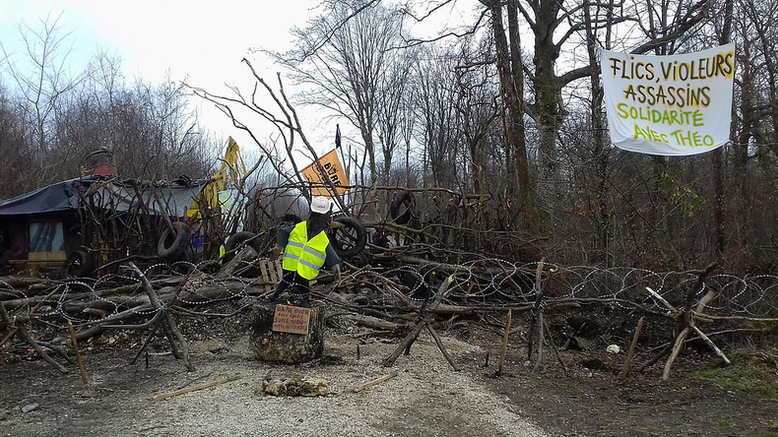
“In the year 2016, many strategies (legal actions, sabotage of the construction site, demonstrations…) were used to stop the destruction of the Bois Lejuc forest by ANDRA (national agency for disposal of nuclear waste). The wall illegally built by ANDRA in the summer of 2016 around the forest couldn’t resist our rage: we tore it down and our occupation has gone on for nearly months.” – statement about last years resistance and sabotage to ANDRA’s construction
ANDRA has been consistently buying farmers land and “buying people out,” as they now own a large swath of land that is much bigger than the size that their public plans stated. The activists from Bure said they are squatting land now owned by ANDRA and creating agricultural fields to feed themselves. This year they are producing two hectares of corn and one hectare of vegetables and may expand this growth in the future.
There are fifty or so activists living on the land in Bure, up from twenty last December. The surrounding region has a very low population, that of around 80 inhabitants or so. The activists plan to have their own agricultural fields, so as to not have an ANDRA eviction just wipe out their food supply one day. They also said that, because of the need for constant food supply to feed the occupiers, they are buying produce from farmers all around the area. Furthermore, they have been making beer and are shipping it to Paris and the “money is coming back“.
In February, an action directed at ANDRA’s CIGEO facility drew about 1,000 people who brought down the barbed wire gates of the facility before being pushed back by police using a mobile gate/barricade and shooting crowd control weapons such as tear gas.
Recent threats of eviction and police pressures are being combated with the scheduled festival on August 12 and 13 thrown by the activists at Bure. The festival, called “Bure’lescos”, is multiple days and will end with an action.
Watch the full presentation on the struggle in Bure, France, from the Embros Theater below:
DEFENDING GERMANY’S HAMBACH FOREST
Since 1978, excavators have been clearing Germany’s oldest trees in Hambach Forest to make way for opencast lignite coal mining. RWE Power, one of Germany’s “leading enterprises in energy production and generation” has cleared all but 1,100 hectares of forest and boast about the popular tourist attractions of “the world’s biggest excavators” being at work on the site of the Hambach pit (cartography).
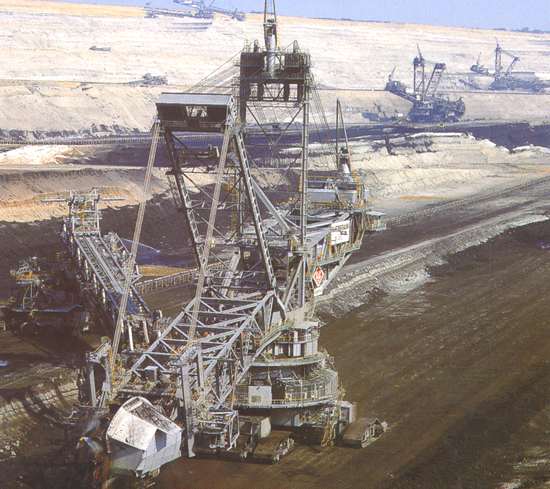
An occupation of five plus years has taken place in the Hambach Forest in Germany in attempts to defend about ten percent of the forest that is left from being cut down to make way for the continued expansion of the opencast lignite mine. Watch a video of a droneflight over Hambach opencast mine pit below.
The presenters from the Hambach Forest told the audience inside the Embros Theater that the occupation in Hambach Forest was for multiple reasons. One of the reasons was the massive amount of pollution from the “the burning of lignite coal [which] produces one third of the CO2 emissions munitions in Germany.”
Another reason is to save the forest. A presenter explained that Hambach Forest “is very special in Germany, it’s the oldest forest,” and said that it’s over 5,000 years old and that some of the trees are three to four hundred years old. Finally, they’re waging a struggle against the system that makes the fossil fuel industry possible.

They have liberated land in which a radical space has been created, where anti-capitalist land defenders have been organizing the encampments in the forest. Their infrastructure for the occupation includes “a roundhouse for the plenaries,” a kitchen, a library, a museum, and treehouses.
“We defend the forest with barricades and sometimes tripods on the streets. We try to block the machines which cut the trees. Every treehouse has a lockdown, so if we are going to be evicted, we can make it more difficult and more expensive [for authorities to get them out].” – Hambach Forest presenter
The names of the occupiers of the forest stay anonymous, even to each other. “We all use different names. Most of us don’t know the real names of the others … it is good because the state really relies on … names and identification,” said one of the presenters. They also said that a few court cases of people who had blocked machinery in the past were thrown out due to the fact that the authorities could not prove that the person who locked down was the same person in the court.
They receive financial support from the larger community who also bring donated supplies to help with the shelter, food, and clothing of the land defenders at Hambach Forest. One of the presenters said that they see the liberated land struggles as a good future in autonomous movement building, “you don’t have to protest against the state anymore, you can simply make the state unnecessary because you have everything.”
In the five years of the struggle to save Hambach Forest, they state that they’ve been most successful at,
“keeping the territory kind-of liberated and having a space where we can experiment and try out some of our ideas of how society and how relationships between humans could work. Relationships which are not based on money or status or authority.” – Hambach Forest presenter speaks on success of occupation
On the other hand, they stated that “it’s not so hopeful to save the forest” because they haven’t been very successful at “preventing the destruction” as the cutting down of trees is continual and more people are needed to defend the forest.
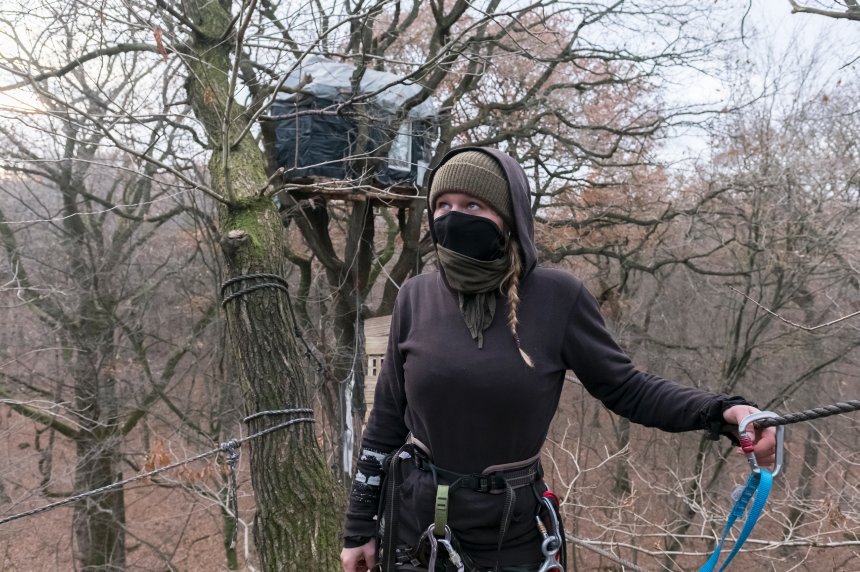
Because of certain regulations in German society, the corporations are not allowed to cut trees in the summer. So the occupation does media work, information and workshop tours, and has assemblies to ready plans for the frontline engagement “against the cutting of the trees” in the winter, which they are trying to rally more people for as they feel their occupied section of the forest is under severe threat this cutting season.
When asked how Greeks can learn from the German forest occupation, the presenters explained that “it’s hard to create an alternative society inside of the state” and that ideas can be built as opposed to just protesting against the state.
“It’s really hard to struggle against capitalism inside the state and inside the city because what you have when you have a territory of your own is the incredible freedom of deciding what you want in this territory.” – Hambach Forest presenter
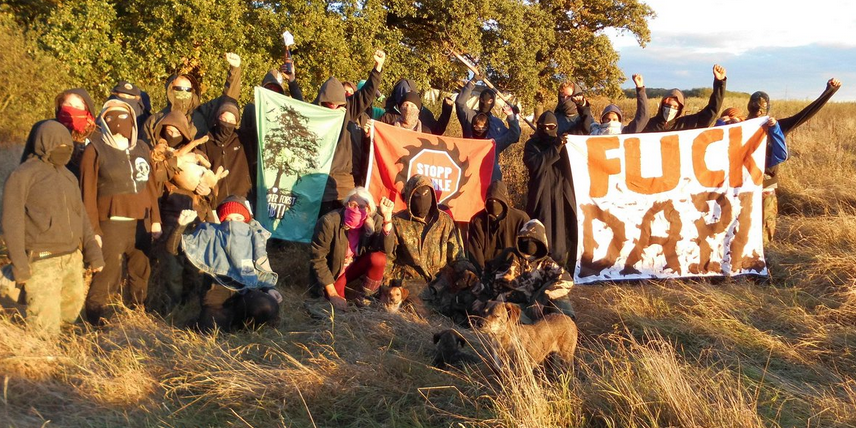
The presenters spoke about other actions that have happened in relation to Hambach and some that are planned around the area. They spoke of the mass actions of civil disobedience called Ende Gelände, and said that although the Ende Gelände actions may have a vertical organizing structure that others may not agree with, they are good for people that are new to the resistance against fossil fuel extraction, or who are not able to join the occupation in the forest. There is an upcoming Climate Camp in the Rhineland from August 18th to August 29th, which will have mass actions of civil disobedience against the coal industry.
As the presenters were setting up times to do workshops on creating infrastructure needed for treehouses and tripods, members of the crowd exclaimed that they hoped that the broader community could somehow support these ongoing grassroots occupations in Bure, ZAD, and the Hambach Forest as much as the highly commercialized Ende Gelände actions.
Listen to the presentation about the defense of the Hambach Forest below:
The first day of the first Networks of Resistance conference wrapped up with the understanding that these movements continue to gain strength through the ability to transfer knowledge and information from and to each other to push the resistance broader. Audience members and speakers continued conversations, networked, and created times for workshops.

These are just three of the struggles in Europe right now, as there are many, many more ongoing, like the Skouries in Greece, and the NoTav movement in Italy. There is also a lot of recent history of repression to these struggles, including the police killing of Remi Fraisse during a protest against Sivens dam project in France.
The presenters of each occupation shared their own thoughts about the respective struggles that they participate in and made sure that the audience knew that they were not spokespeople for the resistance. Part two of our Networks of Resistance coverage is here: Networks of Resistance Pt. 2 – Infrastructure; ExarcheiaNet & Cooperativa Integral.
To help our volunteer-operated, horizontally-organized, non-profit media collective, please consider becoming a monthly sustainer with tax-deductible micro-donations:
Unicorn Riot's Special Reports From Greece [2017]:
- Greece: Alternatives to Neoliberal Capitalism – Introduction
- Greece: Action of Solidarity With Squats and Against Evictions
- Greece: Anarchists Defend Exarcheia’s Autonomous Zone From Police
- Greece: ADYE, Exarcheia’s Free Self-Organized Healthcare Clinic
- Greece: Political Prisoners Pt. 1 – Tasos Freed & Irianna Jailed (Τάσος & Ηριάννα)
- Greece: Political Prisoners Pt. 2 – Targeting of Anarchists & Autonomous Groups
- Greece: Networks of Resistance Pt. 1 – ZAD, Bure, Hambach Forest
- Greece: Networks of Resistance Pt. 2 – Infrastructure; ExarcheiaNet & Cooperativa Integral
- Greece: Alternative Economies & Community Currencies Pt. 1 - Athens Integral Cooperative
- Greece: Alternative Economies & Community Currencies Pt. 2 - Kenya’s Sarafu-Credit
- Greece: Alternative Economies & Community Currencies Pt. 3 - FairCoop
- Greece: The House of Women for Empowerment and Emancipation
- Greece’s First Housing Squat for Refugees & Migrants, Notara 26
Access to all 13 Stories:
Germany Anti-Coal Mine coverage:
- Mass Protests by Climate Activists Follow Eviction of Occupied German Village - January 30, 2023
- Police Evict Environmental Protesters from Lützerath, Germany - January 16, 2023
- Climate Activists Disrupt German Coal Mine Expansion - November 16, 2021
- Tree House Villages Defend Ancient German Forest Against Expanding Coal Mine - September 9, 2019
- Direct Action Shuts Down Coal Infrastructure in Germany - June 21, 2019
- Touring Activists Build Momentum Toward Climate Justice - May 8, 2019
- Journalist Dies During German Police Sweep of Hambach Forest - Sept. 19, 2018
- Police Move to Clear Activists from Ancient Forest on Behalf of Coal Mining Company - Sept. 13, 2018
- Networks of Resistance Pt. 1 – ZAD, Bure, Hambach Forest
- Direct Action Shuts Down Coal Mine in Germany (w/ Interview) – Deprogram Ep. 16 - August 21, 2015
